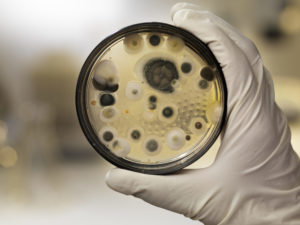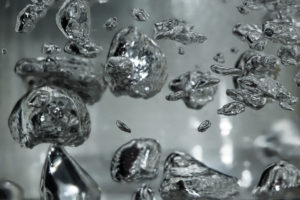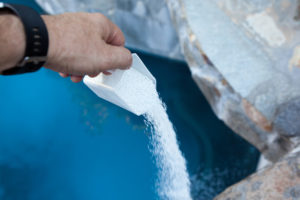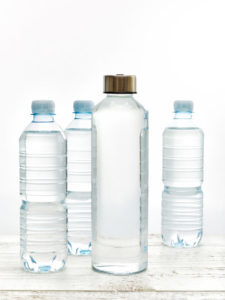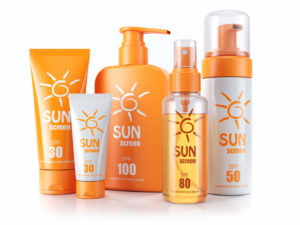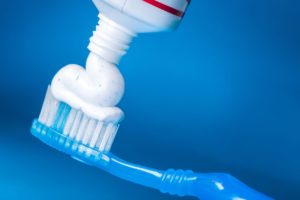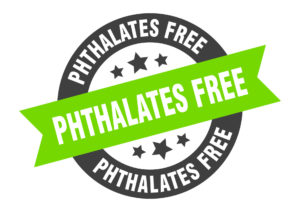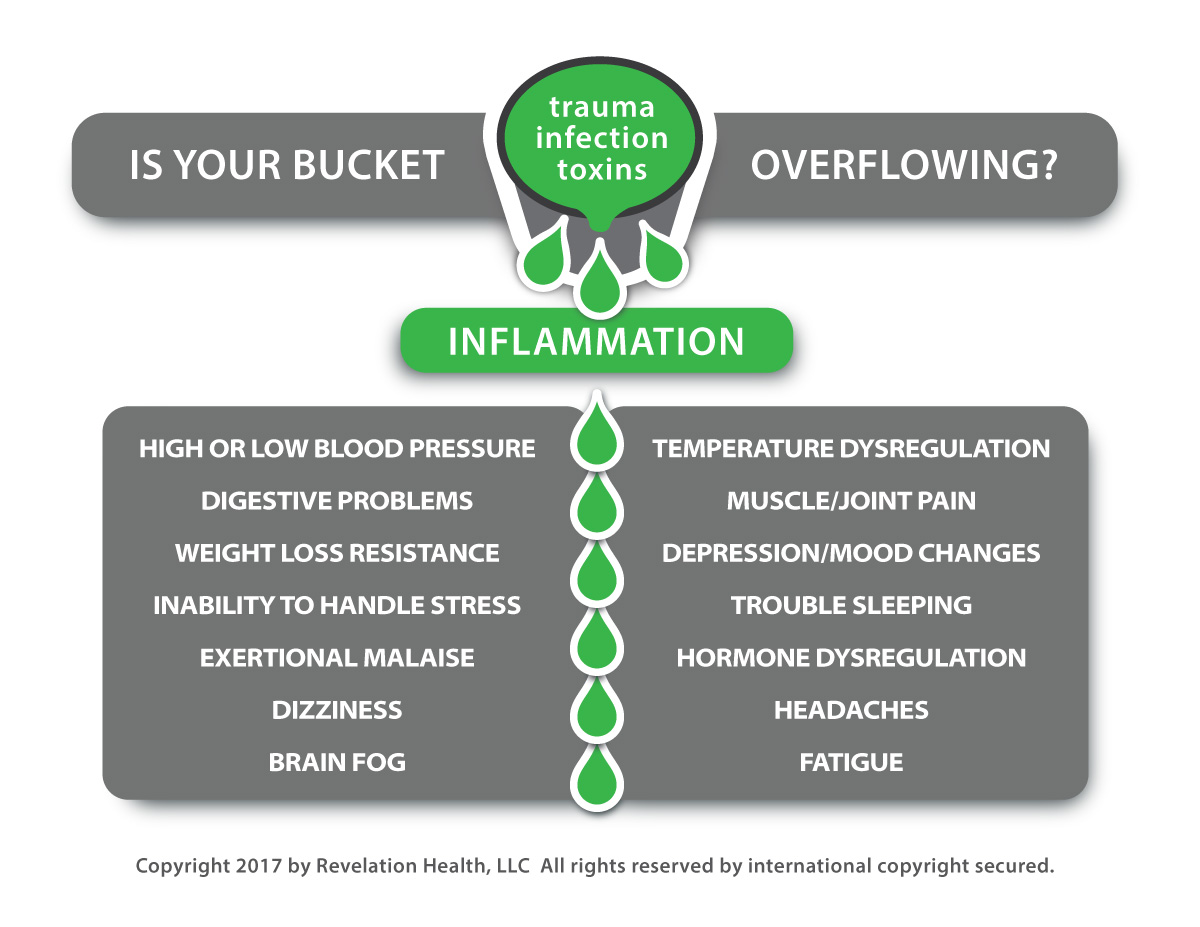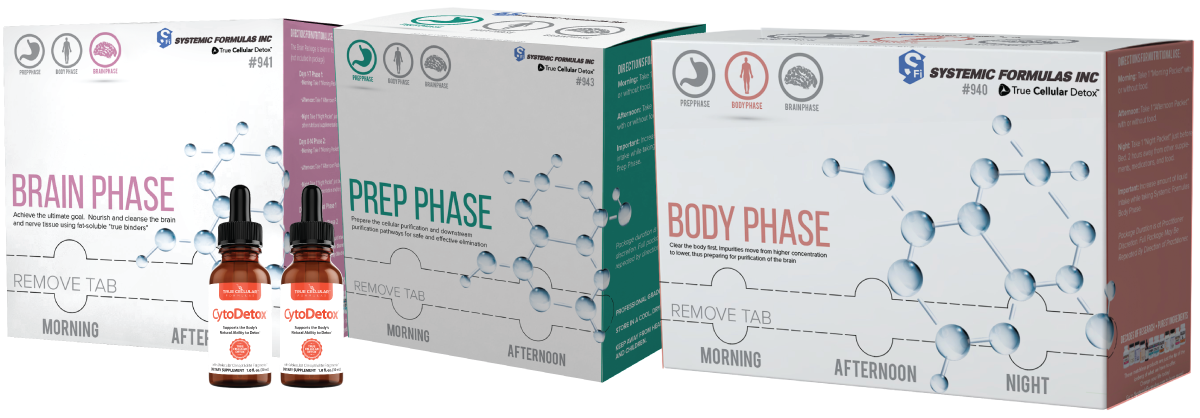The Top 10 Toxins: Living in the modern world comes with a constant bombardment of toxins on our bodies. In time, continuous low-level exposure to this wide array of toxins can lead to toxin overload and all the symptoms of illness and disease that come with cellular toxicity and dysfunction. Today we explore 10 of the most common toxins and how to safely and effectively remove them with True Cellular Detox.

This article has been medically reviewed by Dr. Charles Penick, MD
The Top 10 Most Common Toxins
1. Pesticides
 Pesticides (as well as insecticides, herbicides, fungicides, etc.) are commonly used in conventional farming to keep unwanted pests, weeds, fungi, and more away from food crops. These chemicals penetrate conventional food to its core and then make their way into your body when consumed.
Pesticides (as well as insecticides, herbicides, fungicides, etc.) are commonly used in conventional farming to keep unwanted pests, weeds, fungi, and more away from food crops. These chemicals penetrate conventional food to its core and then make their way into your body when consumed.
According to the Environmental Protection Agency (EPA), 60 percent of herbicides, 90 percent of fungicides, and 30 percent of insecticides are known carcinogens.1
The most common exposure to these toxins comes from the food we consume. Buying organic is one of the best ways to mitigate this problem. At the least, look up the Environmental Working Group’s (EWG) ‘Clean 15’ and ‘Dirty Dozen’ lists, a non-profit organization that updates the highest-exposed crops and least-exposed crops yearly.
Be mindful, too, that public parks and spaces spray herbicides: herbicides like Glyphosate is associated with cancer, and we absorb these toxins through our skin.2 Before walking barefoot in public grasses regularly, find out if your parks are spray-free.
2. Mold
Mold is a fungus that comes in various forms, black mold being the most harmful to human health. Although some people are more sensitive to mold than others, avoiding mold exposure should be important to anyone who wants to experience health and longevity.3 If we start to see toxins as drops in a bucket, it becomes clear that the bucket will overflow over time. People more sensitive to mold may simply have a higher toxic burden, but mold is not conducive to human health.
When moisture is present in buildings and homes, mold is generally present too. Mold grows well on paper products, cardboard, ceiling tiles, and wood products. Mold can also grow in dust, paints, wallpaper, insulation, drywall, carpet, fabric, and upholstery. 3
Mitigating the problem requires well-ventilated spaces, avoiding leaks, always keeping moisture below 50%, and avoiding consuming mold orally through commonly moldy foods (contaminated with mycotoxins), peanuts and wheat corn, alcohol, and coffee. 4
3. Heavy Metals
Heavy metals like mercury, lead, arsenic, cadmium, and aluminum are in various areas of our modern environment. Low-dose exposure over time leads to accumulation of these toxins in our soft tissues, typically in the brain.5 This toxin accumulation is associated with various diseases, like neurological diseases (Alzheimer’s, Parkinson’s) and cancer.6
Staying away from the source of exposure here is critical, and take significant precautions if you’re aware that the paint in your house is lead-based or if you have amalgam fillings. Removing either needs to be done with extreme care and precautions because removing airborne particles and breathing them in these higher doses can be extremely dangerous.7
Common sources of heavy metal exposure include:
Amalgam fillings
Lead-based paint
Tap water contamination
Fish with mercury contamination (generally larger fish)
Herbal medicines that are tainted
Dinnerware that has not been appropriately coated
Working in a factory that uses heavy metals
4. Volatile Organic Compounds (VOCs)
Volatile organic compounds are organic chemicals with a high vapor pressure at ordinary room temperature. Don’t be fooled by the word organic; these gases are human-made chemicals produced when manufacturing paints, pharmaceuticals, and refrigerants. These gasses contain toxic chemicals like trichloroethylene; fuel oxygenates like methyl tert-butyl ether, or by-products produced by chlorination in water treatment, like chloroform.
These airborne toxins are present in the air and are 2-5 times more concentrated inside homes than outdoors. This concentration is because so much of our modern furniture, paint, appliances, flooring, etc., off-gas for years after they are made.8
Avoiding VOCs is not easy because they are so commonly present. Unless you buy non-toxic building materials, paints, furniture, and appliances, your home has elevated VOC levels. One way to mitigate it when buying new if you can’t afford to go all non-toxic yet is to buy second-hand furniture that has already been off-gassing for many years.
Examples of products that emit VOCs include: [8]
- Paints and lacquers
- Paint strippers
- Cleaning supplies
- Pesticides
- Building materials and furnishings
- Office equipment such as copiers and printers
- Correction fluids and carbonless copy paper
- Graphics and craft materials, including glues and adhesives
- Permanent markers
- Photographic solutions
5. Chlorine
Chlorine is one of the most commonly manufactured chemicals in the United States.9 Its most common use is as a bleach in manufacturing paper and cloth, but it is also used to make pesticides (insect killers), rubber, and solvents.
Chlorine is used in drinking water and swimming pool water to kill harmful bacteria, which is the same reason it is detrimental to your health. Chronic exposure to low doses of chlorine impacts our microbiome.10 Exposure to showers and chlorinated swimming pools affects your skin microbiome, while ingesting chlorinated tap water will impact your oral and gut microbiome health.
Avoiding the leading and most common exposures to chlorine requires getting a filter for your drinking water and showers and avoiding swimming or soaking in pools or hot tubs that have been chlorinated. Our bodies absorb a lot of water through the skin, and breathing in chlorine that has been vaporized through a hot shower is even more dangerous.11
6. Bisphenol A (BPA)
Bisphenol A (BPA) is an industrial chemical added to many commercial products, including food containers and hygiene products. In the 50s it began to be used in plastics to increase its durability, and today it is found in a wide range of products and linings of things like canned foods. Not all BPAs get sealed into the products during the manufacturing process, so when it comes in contact with food or beverage, BPAs start leaching in.
BPAs have estrogen-mimicking properties that can lead to estrogen dominance and negatively influence various functions, including thyroid health, energy levels, cell repair, fetal development, and reproduction.12
Since the dangers of BPAs have become relatively mainstream, ‘BPA-free’ products have swept the nation. Oftentimes, they are replaced with equally harmful bisphenol-S (BPS) or bisphenol-F (BPF).13
Avoiding the health dangers and toxicity of all the BP’s requires swapping out plastic and canned foods for fresh foods or foods packaged in glass. Avoid using plastics in general in contact with anything edible or to be used topically on the skin (from plastic water bottles and plastic jugs to plastic wrap, plastic bags, plastic containers, plastic plates, and cutlery, as well as creams and oils stored in plastic containers).
Things that contain fats are especially problematic in plastics since these toxins are fat-soluble. Exposing plastics to heat or cold will deteriorate the plastic, releasing more of these BPs into your food, beverage, and other products.
7. Oxybenzone
Oxybenzone is a commonly used active-ingredients in sunscreen, found in over 75% of such products in the USA. Oxybenzone is an endocrine disruptor, which means it interfered with the production and operation of hormones. Hormones help with an array of functions, including; regulating metabolism and supporting multiple body functions such as reproduction, sleep, mood, growth, and tissue function. Oxybenzone has also been linked directly to altered birth weight in human studies.14,15
An FDA study found blood levels 438 times above the cutoff for systemic exposure, detected in nearly every American and even found in mothers’ milk.16
A better option for a responsible relationship with the sun, first of all, starts with lifestyle. Diet plays a massive role in generating resilience to the sun; eating refined foods (sugar, four, processed cakes, pastries, bread, etc..) increases sensitivity to the sun after addressing lifestyle factors, ideally covering up with clothes, shade, or getting out of the sun when the skin has had enough. Finally, many non-toxic sunscreens use non-nano particle zinc and ingredients like beeswax, shea butter, cacao butter, and essential oils.
The dangers of a lack of sun exposure far outweigh the risks of too much sun exposure, so cultivating a healthy relationship with the sun without exposing the body to unnecessary toxins is vital.17
8. Fluoride
Fluoride is a neurotoxin introduced into dental products like toothpaste and the American drinking water supply, with the argument that it would support the development of strong and healthy teeth. However, deeper research highlights the influence nutrition has on dental decay, begging the question of ethics when it comes to introducing added fluoride into our bodies, considering its dangers.18
Studies now suggest that early-life exposures were negatively associated with children’s performance on cognitive tests. The neurotoxicity levels in these studies were dose-dependent. Tentative benchmark dose calculations suggest that safe exposures are below acceptable or recommended fluoride concentrations in drinking water.19
How can you avoid fluoride exposure?
Get a good quality water filter if you are drinking tap water.
Avoid dental hygiene products that contain added fluoride.
9.Parabens
Parabens are a group of compounds used as preservatives in pharmaceutical and cosmetic products. These synthetic compounds are added to many products, including toothpaste, deodorants, and shampoos, to stop the growth of fungus, bacteria, and other potentially damaging microbes. The food products containing parabens for preservation include beer, soft drinks, desserts, sauces, jams, frozen dairy products, processed vegetables, pickles, and flavoring syrups.
Like many toxins on this list, parabens are known hormone disruptors associated with cancer and infertility.20
Avoiding parabens requires reading the labels and opting for 100% all-natural products with a shorter shelf life or requiring refrigeration. When manufactured products have a 10-year + shelf life, it’s important to question why.
Always read labels and look out for these common types of names for parabens:
- Benzylparaben
- Butylparaben
- Ethylparaben
- Isobutylparaben
- Isopropylparaben
- Methylparaben
- Propylparaben
10. Phthalates
Phthalates are used as plasticizers in PVC plastics and can leach or evaporate into indoor air and atmosphere, foodstuff, and other materials. Consumer products containing phthalates can lead to human toxicity via exposure through direct contact and use, indirectly through leaching into other products, or through general environmental contamination.
Exposure to phthalates is associated with asthma, attention-deficit hyperactivity disorder, breast cancer, obesity and type II diabetes, low IQ, neurodevelopmental issues, behavioral issues, autism spectrum disorders, altered reproductive development, and male fertility issues.21
Avoiding phthalates is especially difficult because they are often unlabelled, but a few tips include:
- Avoiding products packaged in “recycling-code-3” plastic, which often contain BPA and phthalates
- Avoid products that include the ingredient “fragrance” on their label, which can be a hidden name for phthalates
- Buying organic products packaged in glass
Is Your Bucket Overflowing?
Our symptoms are how our body communicates with us: the bucket is overflowing. The constant influx of toxins, trauma and infections causes systemic inflammation in the body that can manifest as a wide range of symptoms, including:
- High or low blood pressure
- Digestive problems
- Weight loss resistance
- Dizziness
- Inability to handle stress
- Exertional malaise
- Brain fog
- Fatigue
- Headaches
- Hormone dysregulation
- Trouble sleeping
- Depression/ Unstable moods
- Temperature dysregulation
- Muscle/ joint pain
If you exhibit toxicity symptoms, embarking on a detox protocol can help alleviate the toxic burden.
How to Safely and Effectively Remove Toxins from the Body with True Cellular Detox
Many of the methods marketed as ‘detoxes’ do minimal, if anything, to truly remove toxins from the body. Cellular toxicity is a multifaceted issue that requires a whole-body approach. To truly detox the cell, let’s examine a five-layered approach that goes upstream and actually gets to the root of toxicity and cellular dysfunction.
Summary
Toxic compounds are found essentially everywhere in the modern world. From the air we breathe to the food and water we drink to the products we put on our bodies, and use to clean our homes. Even the materials we use to build and furnish said homes—These toxic compounds should be mindfully avoided. Still, un-doing the buildup of exposure over a lifetime requires more than a superficial ‘detox.’ Addressing True Cellular Detox explores cellular dysfunction all the way upstream to the root of the problem, being mindful of the entire whole-body process that is a safe and effective detox.
Medical Disclaimer: The information on this website is not intended to replace a one-on-one relationship with a qualified healthcare professional and is not intended as medical advice. It is intended as a sharing of knowledge and information. This article has been medically reviewed by Dr. Charles Penick, MD, for the accuracy of the information provided. Still, we encourage you to make your own healthcare decisions based on your research and in partnership with a qualified healthcare professional.
References
- Damalas, Christos A, and Ilias G Eleftherohorinos. “Pesticide exposure, safety issues, and risk assessment indicators.” International journal of environmental research and public health vol. 8,5 (2011): 1402-19. doi:10.3390/ijerph8051402
- “Widely Used Herbicide Linked to Cancer.” Nature News, Nature Publishing Group, www.nature.com/news/widely-used-herbicide-linked-to-cancer-1.17181.
- “CDC – Mold – General Information – Basic Facts.” Centers for Disease Control and Prevention, Centers for Disease Control and Prevention, 11 Aug. 2020, www.cdc.gov/mold/faqs.htm.
- “Mycotoxins.” World Health Organization, World Health Organization, www.who.int/news-room/fact-sheets/detail/mycotoxins.
- Li, Qingzhao et al. “The preferential accumulation of heavy metals in different tissues following frequent respiratory exposure to PM2.5 in rats.” Scientific Reports vol. 5 16936. 19 Nov. 2015, doi:10.1038/srep16936
- Chen, Pan et al. “Metals and Neurodegeneration.” F1000Research vol. 5 F1000 Faculty Rev-366. 17 Mar. 2016, doi:10.12688/f1000research.7431.1
- Srivastava, Abhinav, et al. “Human Health Effects Emanating from Airborne Heavy Metals Due to Natural and Anthropogenic Activities: A Review.” SpringerLink, Springer, Singapore, 1 Jan. 1970, doi.org/10.1007/978-981-10-7122-5_29.
- “What Are Volatile Organic Compounds (VOCs)?” EPA, Environmental Protection Agency, 1 Aug. 2019, www.epa.gov/indoor-air-quality-iaq/what-are-volatile-organic-compounds-vocs
- “CDC.” Centers for Disease Control and Prevention, Centers for Disease Control and Prevention, 4 Apr. 2018, emergency.cdc.gov/agent/chlorine/basics/facts.asp.
- Huang, Junli, et al. “Disinfection Effect of Chlorine Dioxide on Bacteria in Water.” Water Research, vol. 31, no. 3, 1997, pp. 607–613., doi:10.1016/s0043-1354(96)00275-8.
- White, Carl W, and James G Martin. “Chlorine gas inhalation: human clinical evidence of toxicity and experience in animal models.” Proceedings of the American Thoracic Society vol. 7,4 (2010): 257-63. doi:10.1513/pats.201001-008SM
- Diamanti-Kandarakis, Evanthia et al. “Endocrine-disrupting chemicals: an Endocrine Society scientific statement.” Endocrine reviews vol. 30,4 (2009): 293-342. doi:10.1210/er.2009-0002
- Rochester, Johanna R, and Ashley L Bolden. “Bisphenol S and F: A Systematic Review and Comparison of the Hormonal Activity of Bisphenol A Substitutes.” Environmental health perspectives vol. 123,7 (2015): 643-50. doi:10.1289/ehp.140898
- Sunscreens, EWG’s 2020 Guide to. “EWG’s 2020 Guide to Safer Sunscreens.” EWG, www.ewg.org/sunscreen/report/the-trouble-with-sunscreen-chemicals
- Wang, Jiaying et al. “Recent Advances on Endocrine Disrupting Effects of UV Filters.” International journal of environmental research and public health vol. 13,8 782. 3 Aug. 2016, doi:10.3390/ijerph13080782
- Wang, Jian, and Charles J Ganley. “Safety Threshold Considerations for Sunscreen Systemic Exposure: A Simulation Study.” Clinical pharmacology and therapeutics vol. 105,1 (2019): 161-167. doi:10.1002/cpt.1178
- Mead, M Nathaniel. “Benefits of sunlight: a bright spot for human health.” Environmental health perspectives vol. 116,4 (2008): A160-7. doi:10.1289/ehp.116-a160
- Price, Weston. Nutrition and Physical Degeneration: a Comparison of Primitive and Modern Diets and Their Effects. Garsington, 2010.
- Grandjean, Philippe. “Developmental fluoride neurotoxicity: an updated review.” Environmental health: a global access science source vol. 18,1 110. 19 Dec. 2019, doi:10.1186/s12940-019-0551-x
- Darbre, Philippa D. Endocrine Disruption and Human Health. Academic Press, 2015.
- Heudorf, Ursel, et al. “Phthalates: Toxicology and Exposure.” International Journal of Hygiene and Environmental Health, vol. 210, no. 5, 2007, pp. 623–634., doi:10.1016/j.ijheh.2007.07.011.




